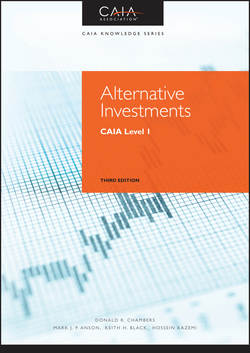Читать книгу Alternative Investments - Hossein Kazemi - Страница 69
На сайте Литреса книга снята с продажи.
PART One
Introduction to Alternative Investments
CHAPTER 4
Statistical Foundations
4.3 Covariance, Correlation, Beta, and Autocorrelation
4.3.7 The Durbin-Watson Test for Autocorrelation
ОглавлениеA formal approach in searching for the presence of first-order autocorrelation in a time series is through the Durbin-Watson test. To test the hypothesis that there is no autocorrelation in a series involves calculating the Durbin-Watson statistic:
(4.22)
where et is the value in time period t of the series being analyzed for autocorrelation.
In alternative investments, the series being analyzed (et) may be returns or a portion of returns, such as the estimated active return. A DW value of 2 indicates no significant autocorrelation (i.e., fails to reject the hypothesis of zero autocorrelation). If DW is statistically greater than 2, then the null hypothesis may be rejected in favor of negative autocorrelation; and if DW is statistically less than 2, then the null hypothesis may be rejected in favor of positive autocorrelation. The magnitude of the difference from 2 required to reject zero autocorrelation is complex, but a rule of thumb is that zero autocorrelation is rejected when DW is greater than 3, which is negative autocorrelation, or less than 1, which is positive autocorrelation. The DW statistics for the market index and the real estate fund are reported in the bottom left-hand corner of Exhibit 4.2. Note that the reported DW statistics for both of the return series fail to reject zero autocorrelation, even though the estimated autocorrelation coefficients appear quite positive.
Конец ознакомительного фрагмента. Купить книгу
